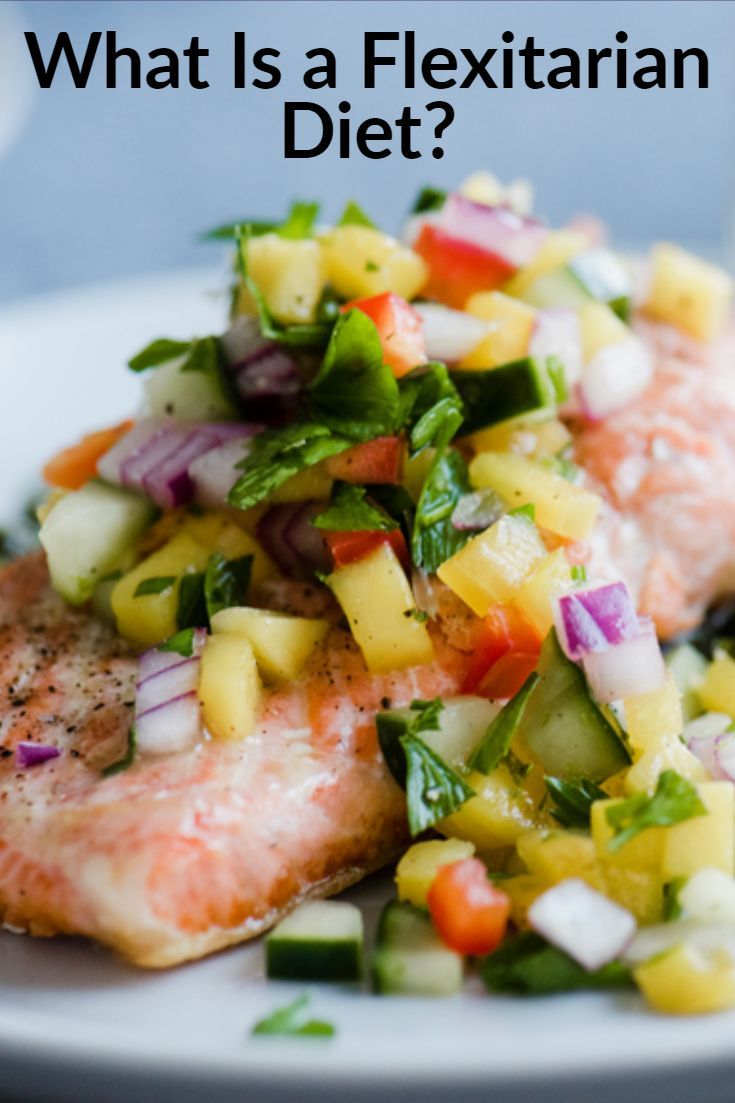Flexitarian Lifestyle: (semi-vegetarian lifestyle)
- Flexitarian is a combination of “flexible” and “vegetarian,” a cross between full vegan and vegetarian with the ability to enjoy animal products every so often.
- Registered dietitian Kate Patton, MEd, RD, CSSD, LD, explained: The flexitarian diet is listed on U.S. News Best Diet Rankings as the #2 Best Diet Overall (falling just behind the Mediterranean diet). It’s ranked high because it’s a simple, healthy, straight forward way of eating. The flexitarian diet is essentially a flexible alternative to being a vegetarian, still focusing on fruits, veggies, whole grains, legumes and nuts, but you occasionally still enjoy meat. The focus: decreasing overall meat consumption.
- A better alternative to a healthy diet that doesn’t involve counting calories, strict rules and allows you to enjoy meat from time to time.
“I think people are attracted to this diet because you can be a little bit more flexible on it,” says Patton. “Most diets imply a start and stop and the weight can creep back on, but the flexitarian diet places a large emphasis on eating a mostly plant-based diet, which is always recommended for long-term weight loss.” But that’s the beauty of this way of eating – you choose how much you want to cut down.
Simple Basic Stages:
Stage 1: Forgo meat 2 days a week; consume no more than 28 ounces a week for the 5 days you do consume it. (Reminder: a card-deck sized portion of chicken or steak is about 3 ounces.)
Stage 2: Get used to eating more fruits and vegetables, focus on following a vegetarian diet 3-4 days a week; consume no more than 18 ounces of meat the rest of the week.
Stage 3: Follow a vegetarian diet for 5 of the 7 days in a week. On the two days you do consume meat, consume no more than 9 ounces.
Right type of meat to eat: When you incorporate meat into your diet, choose organic, free-range, pasture-raised or grass-fed beef, chicken or turkey. Always choose leaner cuts to minimize extra animal fat. You may decide to incorporate fish, just choose wild-caught varieties.
“When it comes to protein, your main focus should be on getting the majority of your protein from plants instead of animals,” says Patton.
Risks and Benefits:
- Decreased risk of heart disease
- Weight loss
- Decreased risk of Type 2 diabetes or management of pre-diabetes
- Help prevent cancer
- Environment-friendly from decreased meat consumption and reducing carbon footprint

Even with all of the benefits, there are still risks for certain people. Cutting back on meat consumption can lead to some nutrient deficiencies like vitamin B12, zinc and calcium. Also, some people who suffer from IBS might not do well with a heavily plant-based diet. If you have digestive issues, Patton recommends knowing which fruits and veggies you can tolerate. “You should always aim to eat the least processed, most natural form of foods,” explained Patton. “You don’t need to worry about counting calories on the flexitarian diet because if you’re eating plant-based foods that come from the ground, it’s not processed and it’s going to be in its most natural form.”
The flexitarian diet is made to be inclusive, but you do want to limit animal protein (including seafood) and processed foods and beverages. Instead, load up on:
- Fruits & Vegetables
- Plant proteins (beans such as black, kidney or navy, edamame, chickpeas, lentils, tofu).
- Whole grains (brown rice, oats, barley , quinoa)
- Plant-based milk (although dairy milk is OK in moderation), Eggs, Dairy (cheese, yogurt or dairy alternatives)
- Nuts, nut butters, seeds and healthy fats
- Oils, herbs and spices
- Limit: Meat and poultry (lean cuts of beef, chicken breast, turkey breast). Fish (salmon, tilapia, cod, shrimp). Anything with added sugar or refined carbohydrates
“Focusing on plant-based foods and not eating as much meat can be really hard for some people,” says Patton. “But nowadays you can find great bean-based burgers, canned bean and lentil soup and bean based pastas to start off, but eventually it’s even better to make your own homemade versions. Don’t be afraid to get adventurous with this diet!” (Reference: https://health.clevelandclinic.org)

